Development of an Early Warning and Incident Response System for the Protection of Visitors from Natural Hazards in Important Outdoor Sites in Greece
Abstract
1. Introduction
2. State-of-the-Art
3. Materials and Methods
- provides to site managers a web platform that informs them on the risk of different natural hazards, allows them to monitor the current situation (e.g., visitors’ distribution), and establishes a communication channel with the site’s personnel and visitors,
- is built around a modular architecture that permits different modules to be included depending on the site’s actual needs and limitations, as well as new modules to be easily integrated,
- uses established messaging standards for emergency information sharing, thus providing a generic way to incorporate any natural hazard risk prediction module into the system, and
- provides a mobile app for site visitors that establishes a communication link for sending alarms, but also serves them with useful tourist information, so that the visitors are encouraged to download and use the app.
3.1. Study Areas
3.2. User Requirements
- Cultural and touristic site stakeholders (representatives with a high level of operational experience from operators and managers of cultural and touristic places, as well as civil protection departments), which were grouped into two subcategories:
- Managers (users of the Xenios central platform): The respective questionnaire content was focused on the operational details of the specific site, access information (entrance, exits, access control systems, ticketing systems, etc.), information for the personnel, visitor information (volume per day/hour/season), dissemination/marketing campaigns, natural hazard analysis, legacy sensors and systems (e.g., meteorological, CCTV), communication systems (e.g., Wi-Fi, 3G/4G), and Xenios-related requirements.
- First responders/field operators (users of the Xenios mobile component): The respective questionnaire aimed to collect information regarding the capability of the responders on technological use, their role in the field, the local site characteristics, and the services offered towards the visitors.
- Cultural and touristic site visitors: The third questionnaire aimed at understanding the profile of the visitors, their familiarization with mobile device usage, the type of their mobile, information and details on the Xenios mobile application and its capabilities (e.g., alert capability, touristic information provision, evacuation route guidance).
3.3. Design Principles
- The system does not store the media access control (MAC) addresses of the visitors, which is a private datum that can uniquely identify the mobile app’s user. Instead, MAC addresses are only used for storing the number of visitors currently served by a specific Wi-Fi router/repeater, in order to know the visitors’ dispersion on the site.
- The auto-display tour (i.e., automatic provision of information of a landmark when the visitor approaches it) does not store Global Positioning System (GPS) track data, neither at the client-side nor at the server-side. The Xenios system does not need the track data, but just the visitor’s last position.
- All data are deleted at the end of the day, keeping only anonymized summary records for non-personal data-related statistical purposes (e.g., number of visitors per day, most popular PoIs, average time to complete visit).
- No username is required for using the mobile app nor names or other personal data are stored during or after the visit, whereas using the Xenios mobile app is not mandatory for entering the site.
3.4. System Architecture
3.5. Pluggable Components
3.5.1. Extreme Weather Forecasting
3.5.2. Fire Danger Forecasting
3.5.3. Fire Behavior Simulations
3.5.4. Flood Danger Forecasting
3.5.5. Ticketing System
3.5.6. Visitor Dispersion Modules
3.5.7. Visitor Informational Content
- Textual description of PoIs.
- Navigation plans or guided e-tours.
- Emergency response plans, the access to which is nevertheless restricted to the site’s manager and authorized public authorities only.
- Meteorological conditions and forecasts.
- Photogrammetric products, such as orthophoto maps, 3D models, and panoramic images, collected through handheld cameras and UAVs.
3.6. Backend Layer
3.7. Frontend Layer
3.7.1. Management Interface
3.7.2. Mobile Application
4. Results
4.1. User Requirements Questionnaires
4.2. Pilot Areas’ Setup
4.3. First Results
5. Discussion
6. Conclusions
Supplementary Materials
Author Contributions
Funding
Institutional Review Board Statement
Informed Consent Statement
Data Availability Statement
Acknowledgments
Conflicts of Interest
References
- Aalst, M.K.V. The Impacts of Climate Change on the Risk of Natural Disasters. Disasters 2006, 30, 5–18. [Google Scholar] [CrossRef]
- Keen, M.; Freeman, P.K.; Mani, M. Dealing with Increased Risk of Natural Disasters: Challenges and Options; Working Paper No. 03/197; International Monetary Fund: Washington, DC, USA, 2003. [Google Scholar]
- Boccard, N. Disaster Risk; Social Science Research Network: Rochester, NY, USA, 2019. [Google Scholar]
- Coronese, M.; Lamperti, F.; Keller, K.; Chiaromonte, F.; Roventini, A. Evidence for Sharp Increase in the Economic Damages of Extreme Natural Disasters. Proc. Natl. Acad. Sci. USA 2019, 116, 21450–21455. [Google Scholar] [CrossRef] [PubMed]
- Putra, I.N.D.; Hitchcock, M. The Bali Bombs and the Tourism Development Cycle. Prog. Dev. Stud. 2006, 6, 157–166. [Google Scholar] [CrossRef]
- Machado, L.P. The Consequences of Natural Disasters in Touristic Destinations: The Case of Madeira Island—Portugal. Tour. Hosp. Res. 2012, 12, 50–56. [Google Scholar] [CrossRef]
- Xanthopoulos, G. The Fire of August 26, 2007 That Damaged Olympia: What Happened and Lessons Learnt. In Proceedings of the International Workshop on Disaster Risk Management At World Heritage Properties, Greek Ministry of Culture and UNESCO, Olympia, Greece, 6 November 2008; pp. 57–63. [Google Scholar]
- Lyrintzis, G.; Baloutsos, G.; Karetsos, G.; Daskalakou, E.Ν.; Xanthopoulos, G.; Tsagari, C.; Mantakas, G.; Bourletsikas, A. Olympic Rebirth. Wildfire Mag. 2010, 19, 12–20. [Google Scholar]
- Kim, D.H.; Lee, M.B.; Viegas, D.; Pita, L.; Ribeiro, L. Analysis of Yangyang Forest Fire and the Destruction of Historical Naksan Temple in Republic of Korea. In Proceedings of the 6th International Conference on Forest Fire Research, Coimbra, Portugal, 15 November 2010. [Google Scholar]
- UNESCO World Heritage Centre. Climate Change and World Heritage: Report on Predicting and Managing the Impacts of Climate Change on World Heritage and Strategy to Assist. States Parties to Implement. Appropriate Management Responses; World heritage reports no. 22; UNESCO World Heritage Centre: Paris, France, 2006. [Google Scholar]
- UNESCO; ICCROM; ICOMOS; IUCN. Managing Disaster Risks for World Heritage; United Nations Educational, Scientific and Cultural Organization: Paris, France, 2010. [Google Scholar]
- Michalski, S.; Pedersoli, J.L., Jr. The ABC Method: A Risk Management Approach to the Preservation of Cultural Heritage; Canadian Conservation Institute & ICCROM: Ottawa, ON, Canada, 2016. [Google Scholar]
- ICOMOS Climate Change and Heritage Group. Future of Our Pasts: Engaging Cultural Heritage in Climate Action; International Council on Monuments and Sites—ICOMOS: Paris, France, 2019. [Google Scholar]
- UNESCO MAB. Technical Guidelines for Biosphere Reserves; Division of Ecological and Earth Sciences UNESCO: Paris, France, 2020. [Google Scholar]
- McDonald, J. The financial liability of park managers for visitor injuries. In Nature-Based Tourism, Environment and Land Management; Buckley, R., Pickering, C., Weaver, D.B., Eds.; CABI: Wallingford, UK, 2003; pp. 35–50. ISBN 978-0-85199-732-2. [Google Scholar]
- Ritchie, B. Tourism Disaster Planning and Management: From Response and Recovery to Reduction and Readiness. Curr. Issues Tour. 2008, 11, 315–348. [Google Scholar] [CrossRef]
- Becken, S.; Hughey, K.F.D. Linking Tourism into Emergency Management Structures to Enhance Disaster Risk Reduction. Tour. Manag. 2013, 36, 77–85. [Google Scholar] [CrossRef]
- Farazis, G.; Thomopoulos, C.; Bourantas, C.; Mitsigkola, S.; Thomopoulos, S.C.A. Digital Approaches for Public Outreach in Cultural Heritage: The Case Study of IGuide Knossos and Ariadne’s Journey. Digit. Appl. Archaeol. Cult. Herit. 2019, 15, e00126. [Google Scholar] [CrossRef]
- Andrews, P.L. Current Status and Future Needs of the BehavePlus Fire Modeling System. Int. J. Wildland Fire 2014, 23, 21–33. [Google Scholar] [CrossRef]
- Finney, M.A. An Overview of FlamMap Fire Modeling Capabilities. In Proceedings of the Fuels Management-How to Measure, Department of Agriculture, Forest Service, Rocky Mountain Research Station, Portland, OR, USA, 28 March 2006; Andrews, P.L., Butler, B.W., Eds.; Volume RMRS-P-41, pp. 213–220. [Google Scholar]
- Doulamis, A.; Lambropoulos, K.; Kyriazis, D.; Moropoulou, A. Resilient Eco-Smart Strategies and Innovative Technologies to Protect Cultural Heritage. In Proceedings of the Transdisciplinary Multispectral Modeling and Cooperation for the Preservation of Cultural Heritage; Moropoulou, A., Korres, M., Georgopoulos, A., Spyrakos, C., Mouzakis, C., Eds.; Springer International Publishing: Cham, Switzerland, 2019; pp. 376–384. [Google Scholar]
- Ravankhah, M.; Chliaoutakis, A.; Revez, M.J.; de Wit, R.; Argyriou, A.V.; Anwar, A.; Heeley, J.; Birkmann, J.; Sarris, A.; Žuvela-Aloise, M. A Multi-Hazard Platform for Cultural Heritage at Risk: The STORM Risk Assessment and Management Tool. IOP Conf. Ser. Mater. Sci. Eng. 2020, 949, 012111. [Google Scholar] [CrossRef]
- Ragia, L.; Antoniou, V. Making Smart Cities Resilient to Climate Change by Mitigating Natural Hazard Impacts. ISPRS Int. J. Geo-Inf. 2020, 9, 153. [Google Scholar] [CrossRef]
- Pastonchi, L.; Barra, A.; Monserrat, O.; Luzi, G.; Solari, L.; Tofani, V. Satellite Data to Improve the Knowledge of Geohazards in World Heritage Sites. Remote Sens. 2018, 10, 992. [Google Scholar] [CrossRef]
- Themistocleous, K.; Danezis, C.; Frattini, P.; Crosta, G.; Valagussa, A. Best Practices for Monitoring, Mitigation, and Preservation of Cultural Heritage Sites Affected by Geo-Hazards: The Results of the PROTHEGO Project. In Proceedings of the Sixth International Conference on Remote Sensing and Geoinformation of the Environment (RSCy2018), International Society for Optics and Photonics, Paphos, Cyprus, 6 August 2018; Volume 10773, p. 107730. [Google Scholar]
- Figueiredo, R.; Romão, X.; Paupério, E. Flood Risk Assessment of Cultural Heritage at Large Spatial Scales: Framework and Application to Mainland Portugal. J. Cult. Herit. 2020, 43, 163–174. [Google Scholar] [CrossRef]
- Fattore, C.; Abate, N.; Faridani, F.; Masini, N.; Lasaponara, R. Google Earth Engine as Multi-Sensor Open-Source Tool for Supporting the Preservation of Archaeological Areas: The Case Study of Flood and Fire Mapping in Metaponto, Italy. Sensors 2021, 21, 1791. [Google Scholar] [CrossRef]
- Regulation (EU) 2016/679 of the European Parliament and of the Council of 27 April 2016 on the Protection of Natural Persons with Regard to the Processing of Personal Data and on the Free Movement of Such Data, and Repealing Directive 95/46/EC (General Data Protection Regulation). Off. J. Eur. Union 2016, L 119, 1–88.
- Skamarock, W.C.; Klemp, J.B.; Dudhia, J.; Gill, D.O.; Barker, D.; Duda, M.G.; Huang, X.; Wang, W.; Powers, J.G. A Description of the Advanced Research WRF Version 3; University Corporation for Atmospheric Research: Boulder, CO, USA, 2008. [Google Scholar]
- Politi, N.; Nastos, P.T.; Sfetsos, A.; Vlachogiannis, D.; Dalezios, N.R. Evaluation of the AWR-WRF Model Configuration at High Resolution over the Domain of Greece. Atmos. Res. 2018, 208, 229–245. [Google Scholar] [CrossRef]
- Politi, N.; Sfetsos, A.; Vlachogiannis, D.; Nastos, P.T.; Karozis, S. A Sensitivity Study of High-Resolution Climate Simulations for Greece. Climate 2020, 8, 44. [Google Scholar] [CrossRef]
- Emmanouil, G.; Vlachogiannis, D.; Sfetsos, A. Exploring the Ability of the WRF-ARW Atmospheric Model to Simulate Different Meteorological Conditions in Greece. Atmos. Res. 2021, 247, 105226. [Google Scholar] [CrossRef]
- Buehner, M.; Morneau, J.; Charette, C. Four-Dimensional Ensemble-Variational Data Assimilation for Global Deterministic Weather Prediction. Nonlinear Process. Geophys. 2013, 20, 669–682. [Google Scholar] [CrossRef]
- Saha, S.; Moorthi, S.; Wu, X.; Wang, J.; Nadiga, S.; Tripp, P.; Behringer, D.; Hou, Y.-T.; Chuang, H.; Iredell, M.; et al. The NCEP Climate Forecast System Version 2. J. Clim. 2014, 27, 2185–2208. [Google Scholar] [CrossRef]
- Chowdhury, E.H.; Hassan, Q.K. Operational Perspective of Remote Sensing-Based Forest Fire Danger Forecasting Systems. ISPRS J. Photogramm. Remote Sens. 2015, 104, 224–236. [Google Scholar] [CrossRef]
- Turner, J.A.; Lawson, B.D. Weather in the Canadian Forest Fire Danger Rating System. A User Guide to National Standards and Practices; Information Report (PFC—Victoria); Canadian Forestry Service, Pacific Forest Research Centre: Victoria, BC, Canada, 1978. [Google Scholar]
- Van Wagner, C.E. Development and Structure of the Canadian Forest Fire Weather Index System; Forestry Technical Report 35; Canadian Forestry Service, Headquarters, Ottawa: Ottawa, ON, Canada, 1987. [Google Scholar]
- Varela, V.; Sfetsos, A.; Vlachogiannis, D.; Gounaris, N. Fire Weather Index (FWI) Classification for Fire Danger Assessment Applied in Greece. Tethys J. Weather Clim. West. Mediterrania 2015, 15, 31–40. [Google Scholar] [CrossRef]
- Varela, V.; Vlachogiannis, D.; Sfetsos, A.; Politi, N.; Karozis, S. Methodology for the Study of Near-Future Changes of Fire Weather Patterns with Emphasis on Archaeological and Protected Touristic Areas in Greece. Forests 2020, 11, 1168. [Google Scholar] [CrossRef]
- Stefanidou, A.; Gitas, I.Z.; Stavrakoudis, D.; Eftychidis, G. Midterm Fire Danger Prediction Using Satellite Imagery and Auxiliary Thematic Layers. Remote Sens. 2019, 11, 2786. [Google Scholar] [CrossRef]
- Vermote, E. MOD09A1 MODIS/Terra Surface Reflectance 8-Day L3 Global 500m SIN Grid V006 [Data Set]; NASA EOSDIS Land Processes DAAC: Sioux Falls, SD, USA, 2015. [Google Scholar]
- Chuvieco, E.; Riaño, D.; Aguado, I.; Cocero, D. Estimation of Fuel Moisture Content from Multitemporal Analysis of Landsat Thematic Mapper Reflectance Data: Applications in Fire Danger Assessment. Int. J. Remote Sens. 2002, 23, 2145–2162. [Google Scholar] [CrossRef]
- Caccamo, G.; Chisholm, L.A.; Bradstock, R.A.; Puotinen, M.L. Using Remotely-Sensed Fuel Connectivity Patterns as a Tool for Fire Danger Monitoring. Geophys. Res. Lett. 2012, 39, L01302. [Google Scholar] [CrossRef]
- Stefanidou, A.; Gitas, I.Z.; Katagis, T. A National Fuel Type Mapping Method Improvement Using Sentinel-2 Satellite Data. Geocarto Int. 2020. [Google Scholar] [CrossRef]
- Tadono, T.; Ishida, H.; Oda, F.; Naito, S.; Minakawa, K.; Iwamoto, H. Precise Global DEM Generation by ALOS PRISM. ISPRS Ann. Photogramm. Remote Sens. Spat. Inf. Sci. 2014, II–4, 71–76. [Google Scholar] [CrossRef]
- MODIS Land Science Team MOD09A1N MODIS/Terra Level 3 Daily Rolling-8-Day Surface Reflectance—500m; NASA LANCE MODIS at the MODAPS: Greenbelt, MD, USA, 2015.
- Rothermel, R.C. A Mathematical Model for Predicting Fire Spread in Wildland Fuels; U.S. Department of Agriculture, Intermountain Forest and Range Experiment Station: Ogden, UT, USA, 1972. [Google Scholar]
- Ager, A.A.; Vaillant, N.M.; Finney, M.A. Integrating Fire Behavior Models and Geospatial Analysis for Wildland Fire Risk Assessment and Fuel Management Planning. Available online: https://www.hindawi.com/journals/jc/2011/572452/ (accessed on 26 February 2021).
- Eftichidis, G.; Margaritis, E.; Sfyris, A.; Varela, V. Fire Management Information System: FMIS. In Proceedings of the III International Conference on Forest Fire Research and 14th Conference on Fire and Forest Meteorology, ADAI University of Coimbra, Luso, Coimbra, Portugal, 16 November 1998; Viegas, X.D., Ed.; [Google Scholar]
- Dijkstra, E.W. A Note on Two Problems in Connexion with Graphs. Numer. Math. 1959, 1, 269–271. [Google Scholar] [CrossRef]
- Ross, D.G.; Smith, I.N.; Manins, P.C.; Fox, D.G. Diagnostic Wind Field Modeling for Complex Terrain: Model Development and Testing. J. Appl. Meteorol. Climatol. 1988, 27, 785–796. [Google Scholar] [CrossRef]
- Charley, W.; Pabst, A.; Peters, J. Hydrologic Modeling System (HEC-HMS): Design and Development Issues; Hydrologic Engineering Center, US Army Corps of Engineers: Davis, CA, USA, 1995; pp. 1–13. [Google Scholar]
- Scharffenberg, B.; Bartles, M.; Brauer, T.; Fleming, M.; Karlovits, G. Hydrologic Modeling System HEC-HMS, User’s Manual (Version 4.3)); U.S. Army Corps of Engineers, Institute for Water Resources, Hydrologic Engineering Center (CEIWR-HEC): Davis, CA, USA, 2018. [Google Scholar]
- OASIS Emergency Management TC. Available online: https://www.oasis-open.org/committees/tc_home.php?wg_abbrev=emergency#overview (accessed on 26 February 2021).
- Kantorovitch, J.; Giakoumaki, A.; Korakis, A.; Papadopoulos, H.; Milis, G.; Kolios, P.; Staykova, T. Knowledge Modelling Framework. In Proceedings of the 2015 2nd International Conference on Information and Communication Technologies for Disaster Management (ICT-DM), Rennes, France, 30 November–2 December 2015; pp. 145–151. [Google Scholar]
- Granot, H. Emergency Inter-organizational Relationships. Disaster Prev. Manag. Int. J. 1997, 6, 305–310. [Google Scholar] [CrossRef]
- Bharosa, N.; Lee, J.; Janssen, M. Challenges and Obstacles in Sharing and Coordinating Information during Multi-Agency Disaster Response: Propositions from Field Exercises. Inf. Syst. Front. 2010, 12, 49–65. [Google Scholar] [CrossRef]
- Kalkman, J.P.; Kerstholt, J.H.; Roelofs, M. Crisis Response Team Decision-Making as a Bureau-Political Process. J. Contingencies Crisis Manag. 2018, 26, 480–490. [Google Scholar] [CrossRef]
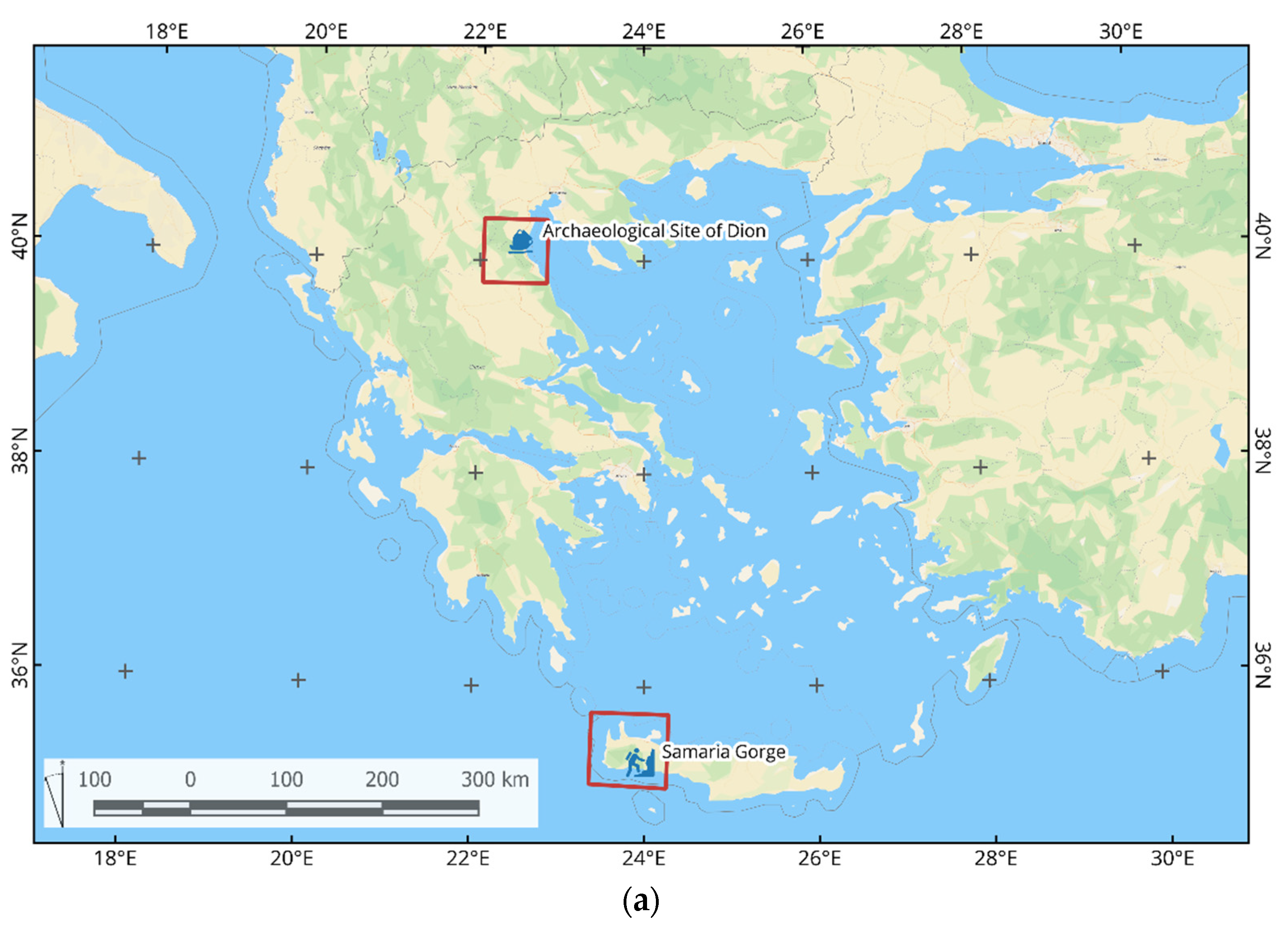
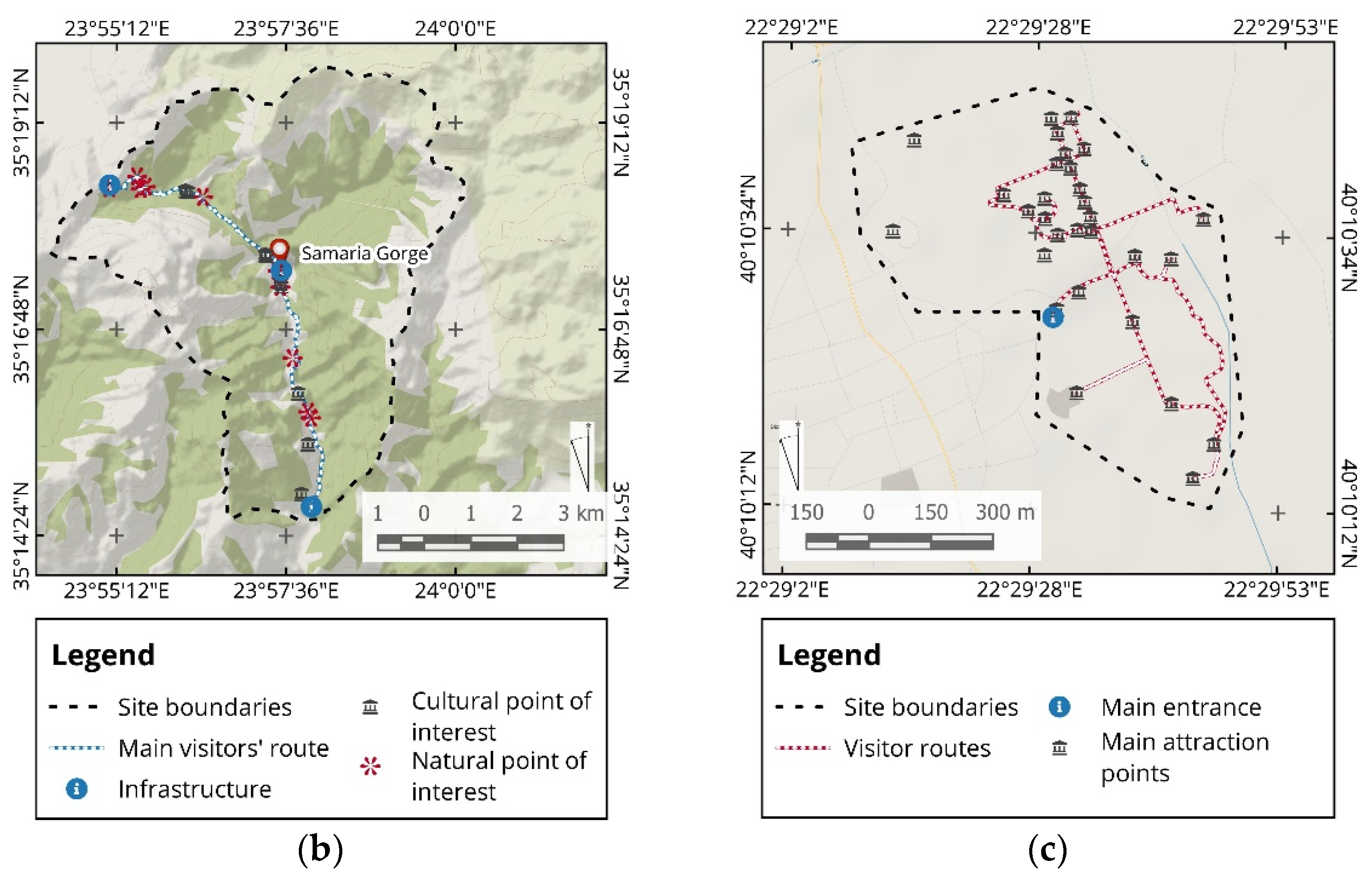
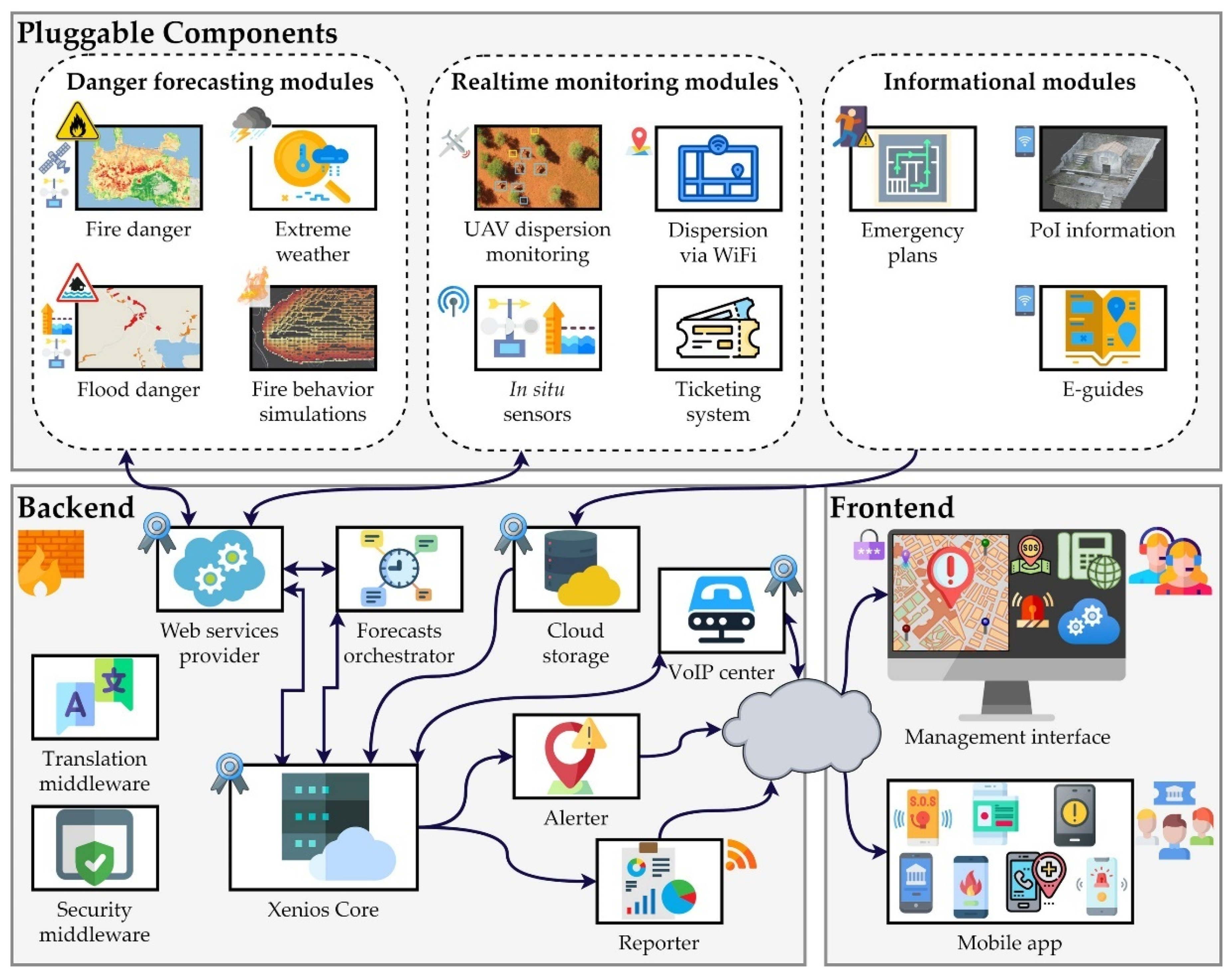
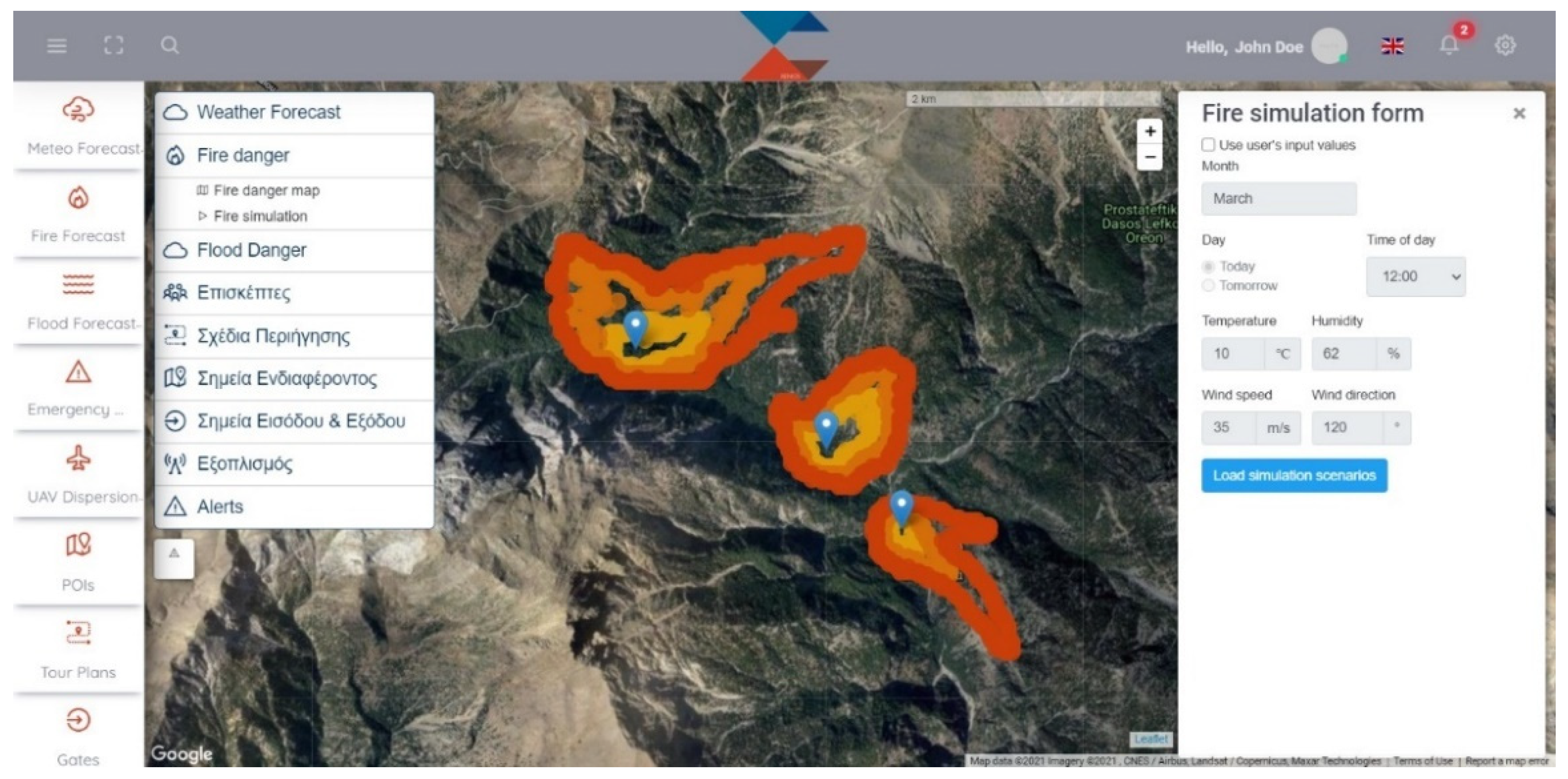
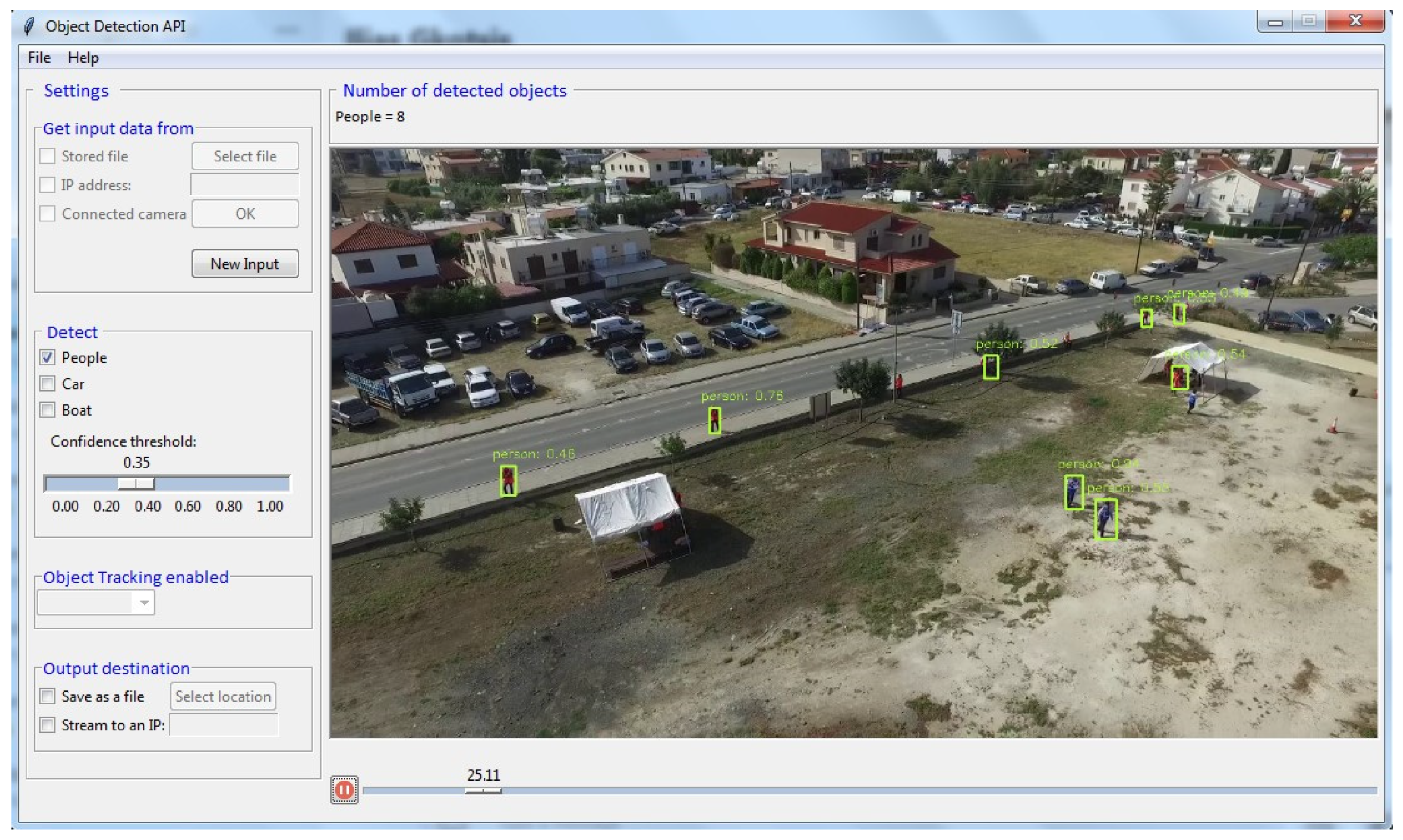
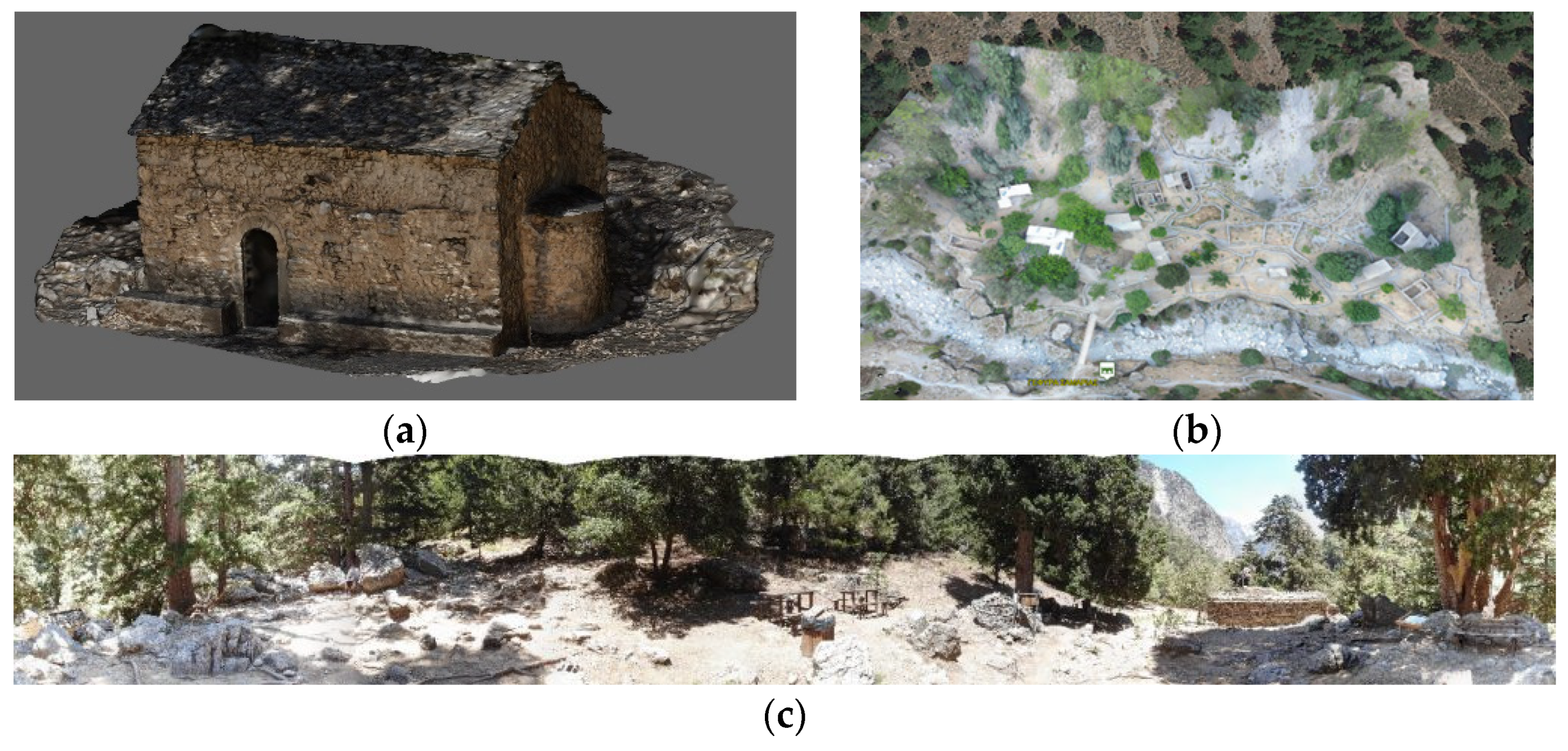
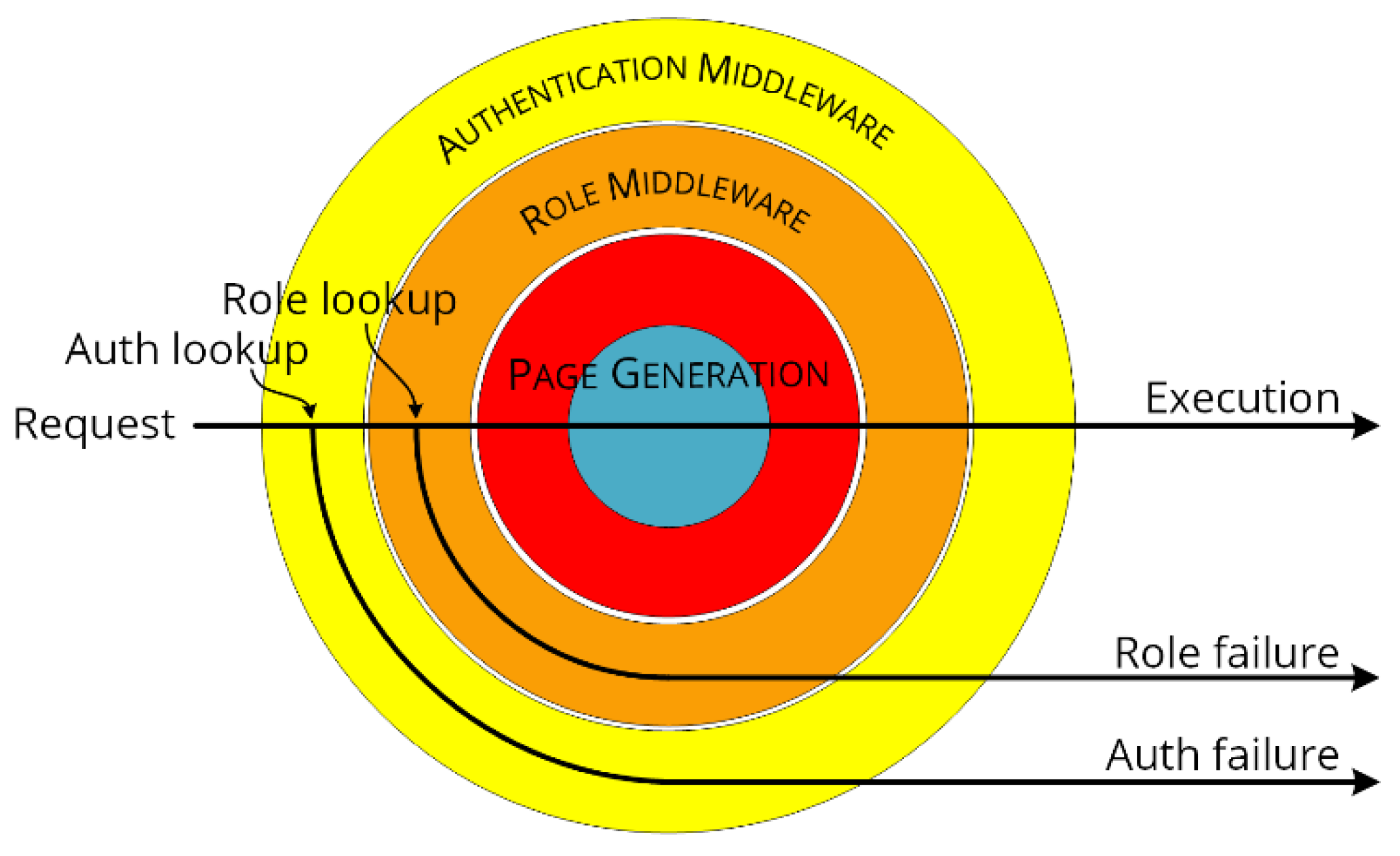
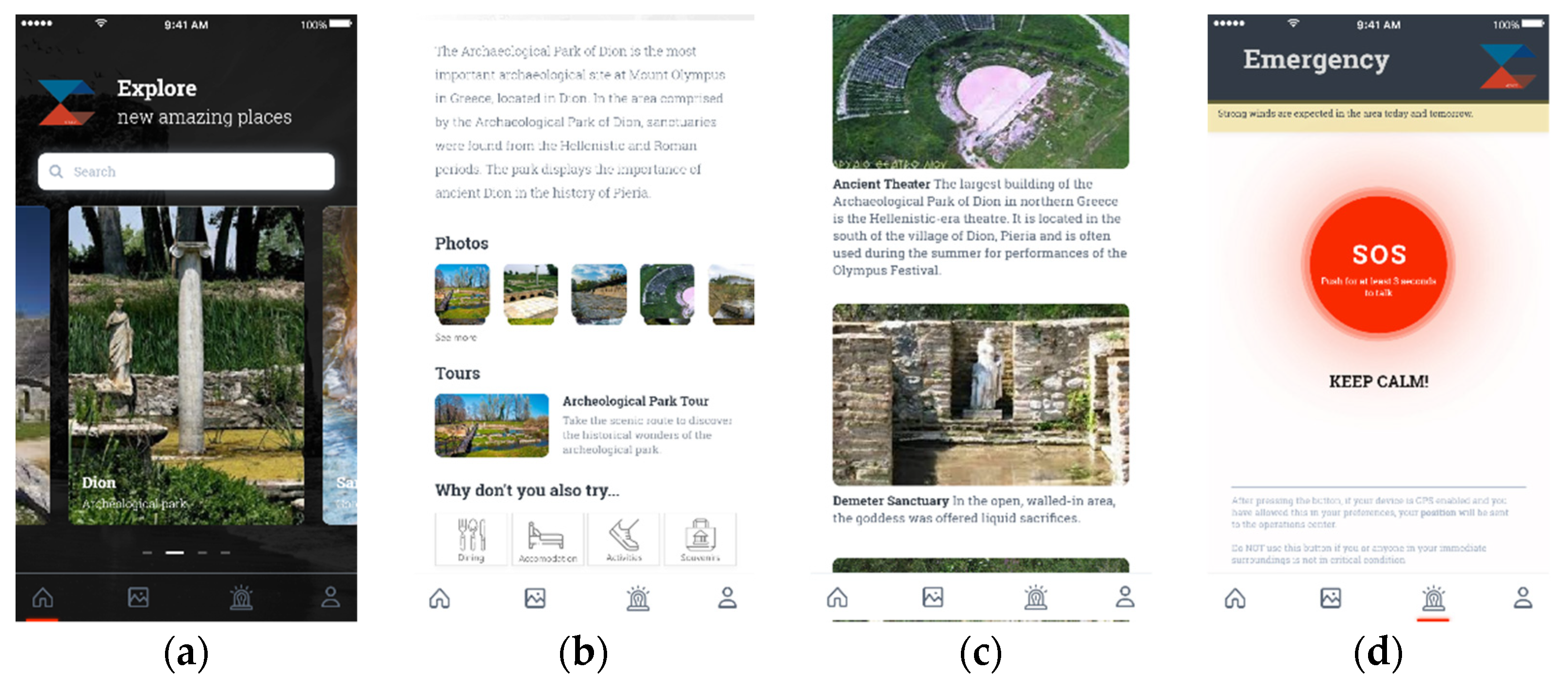
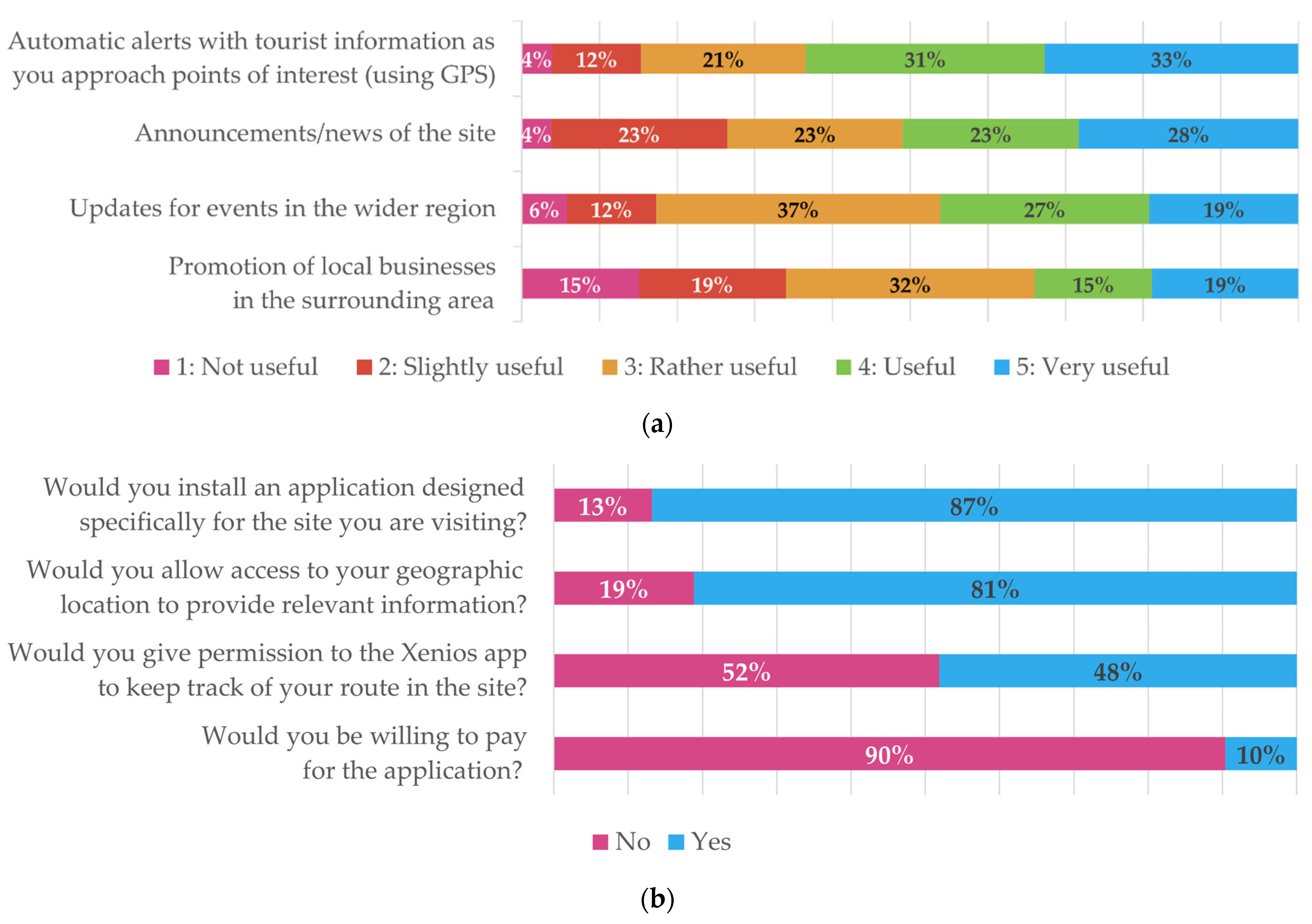
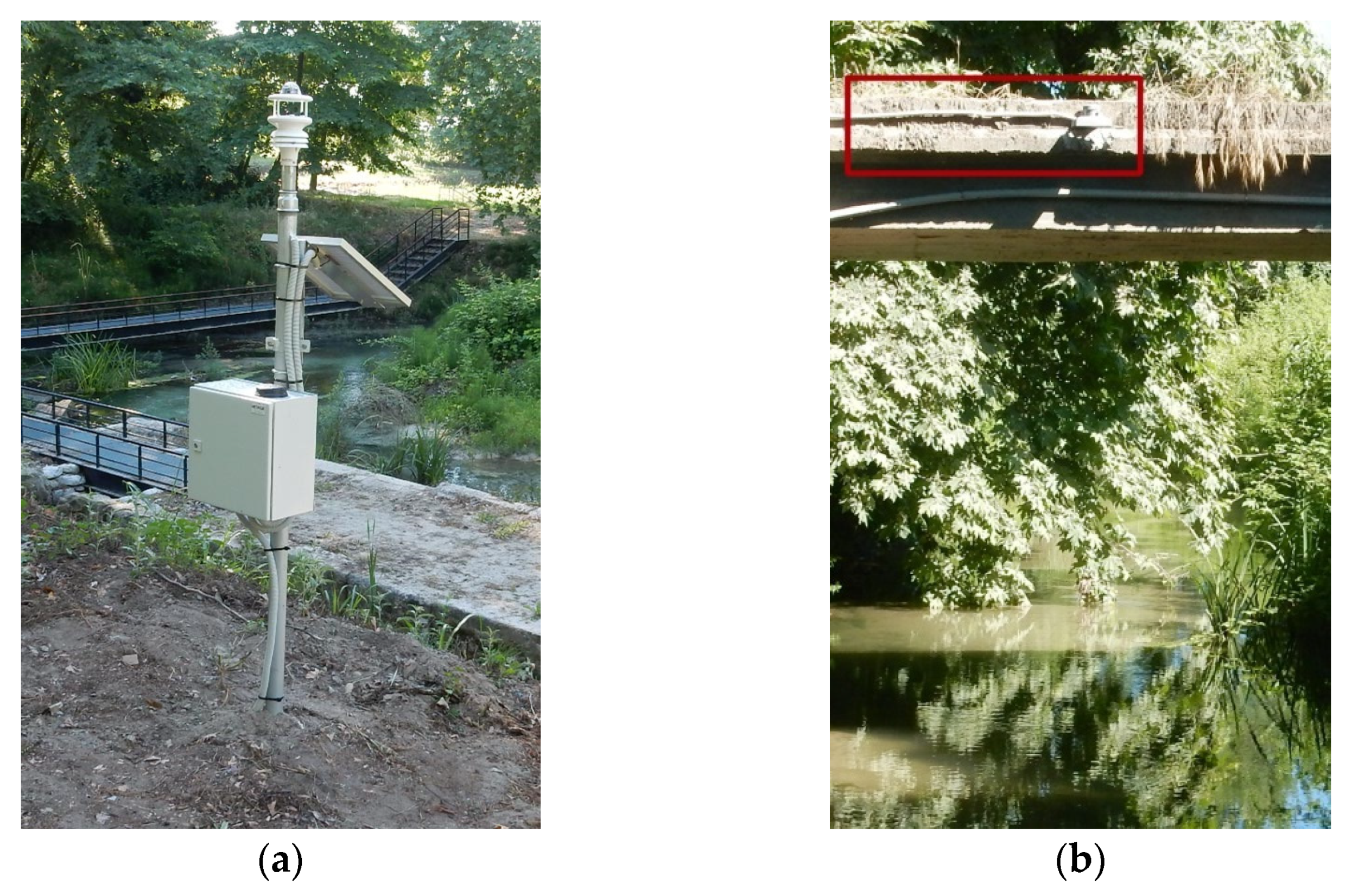
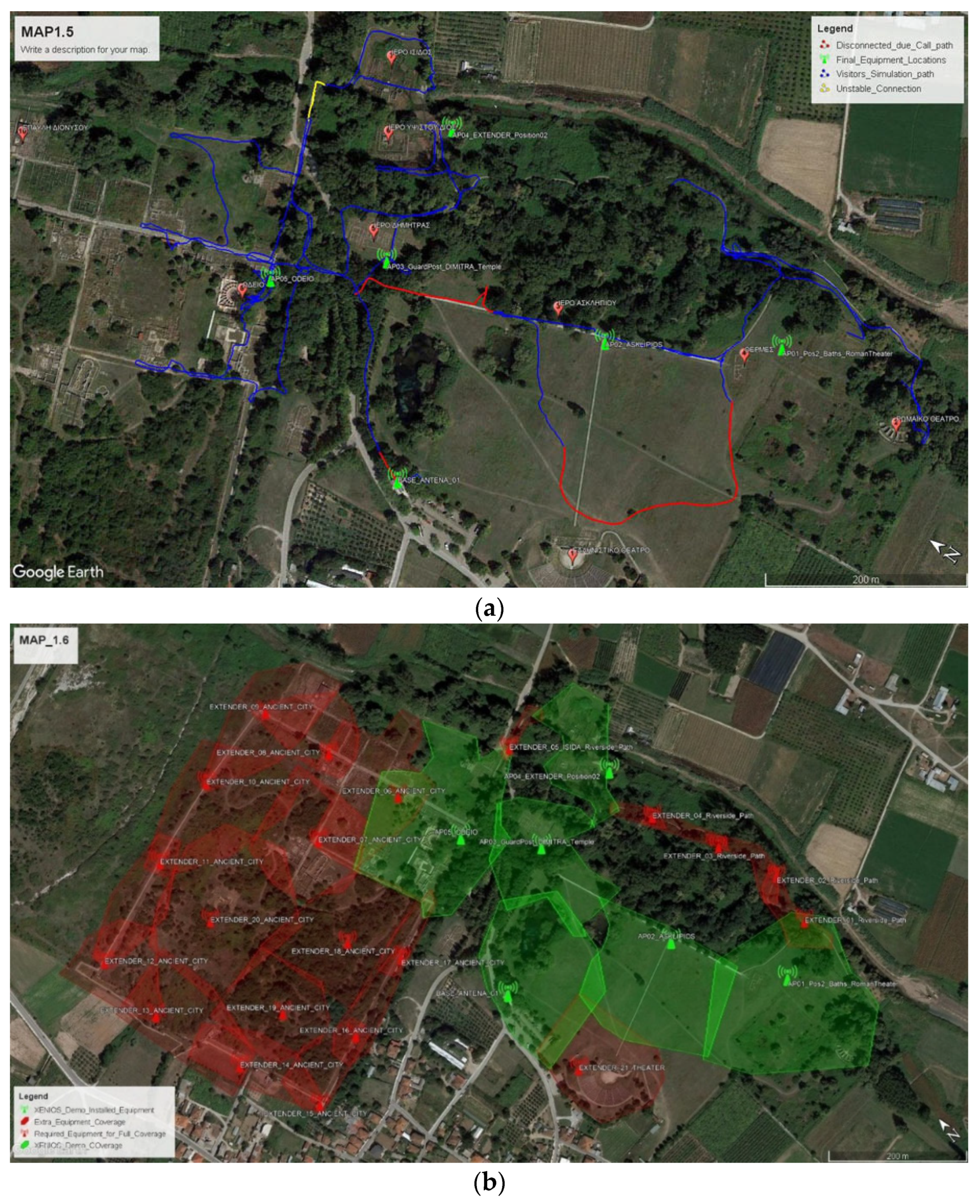
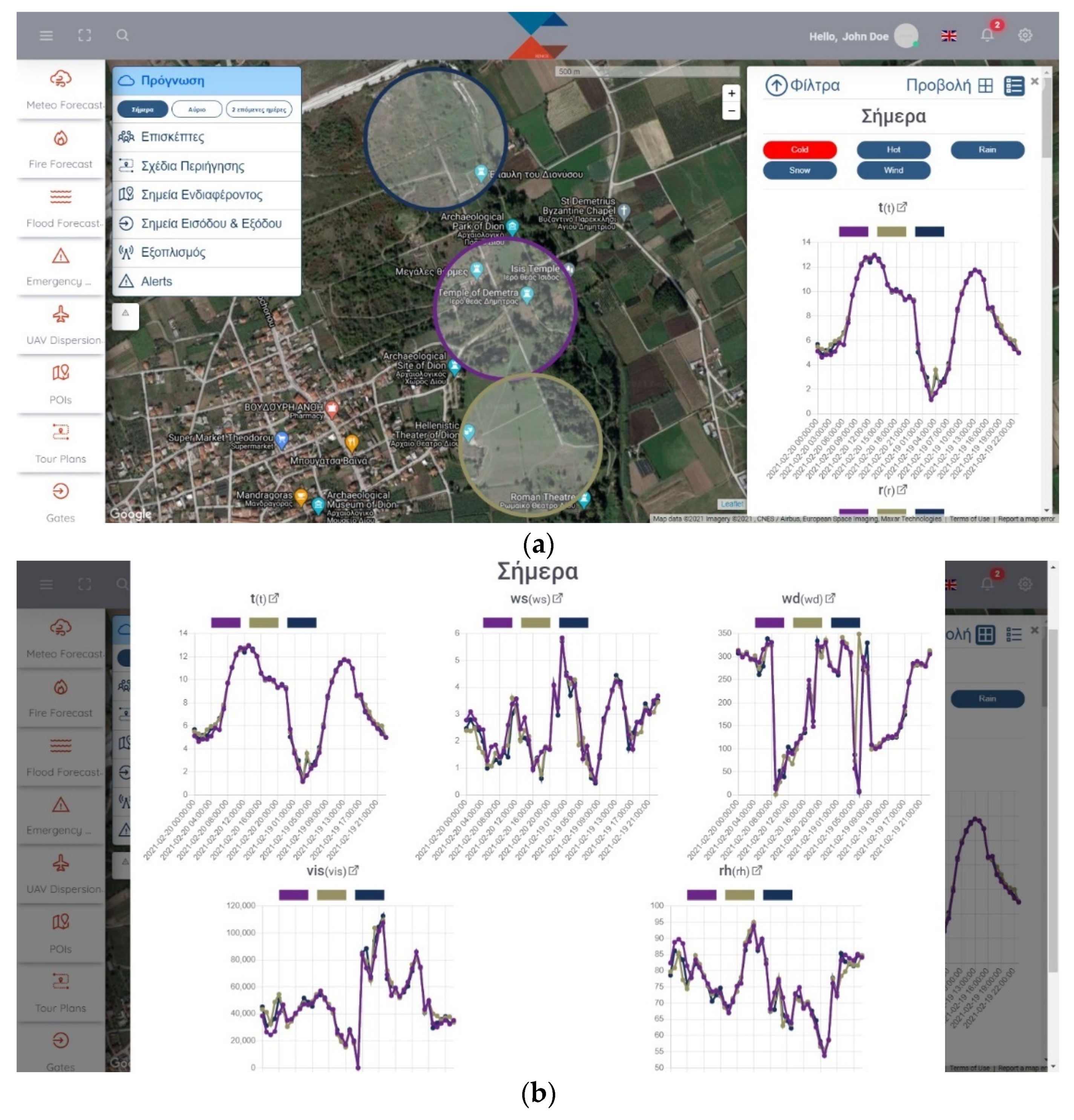
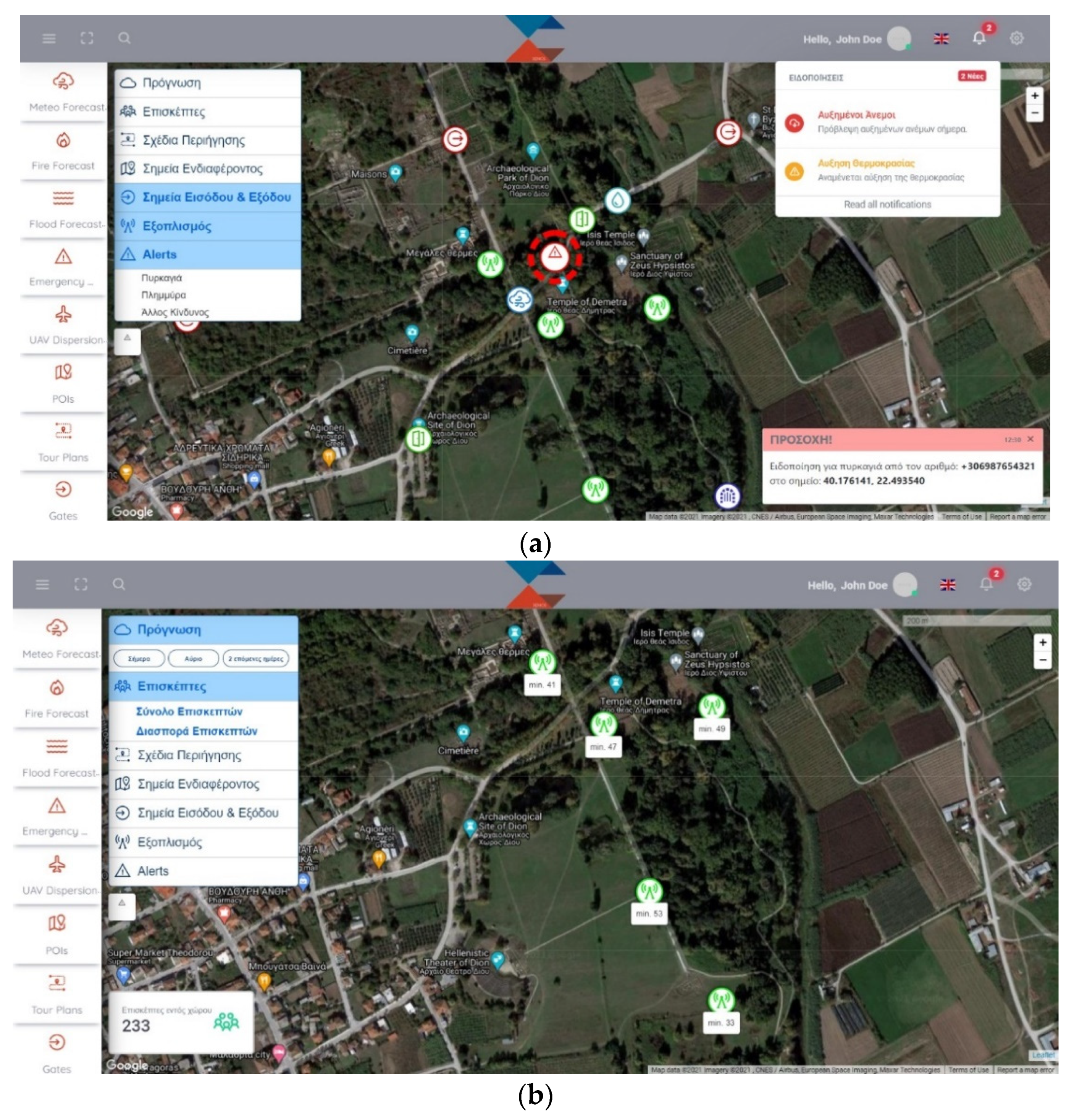
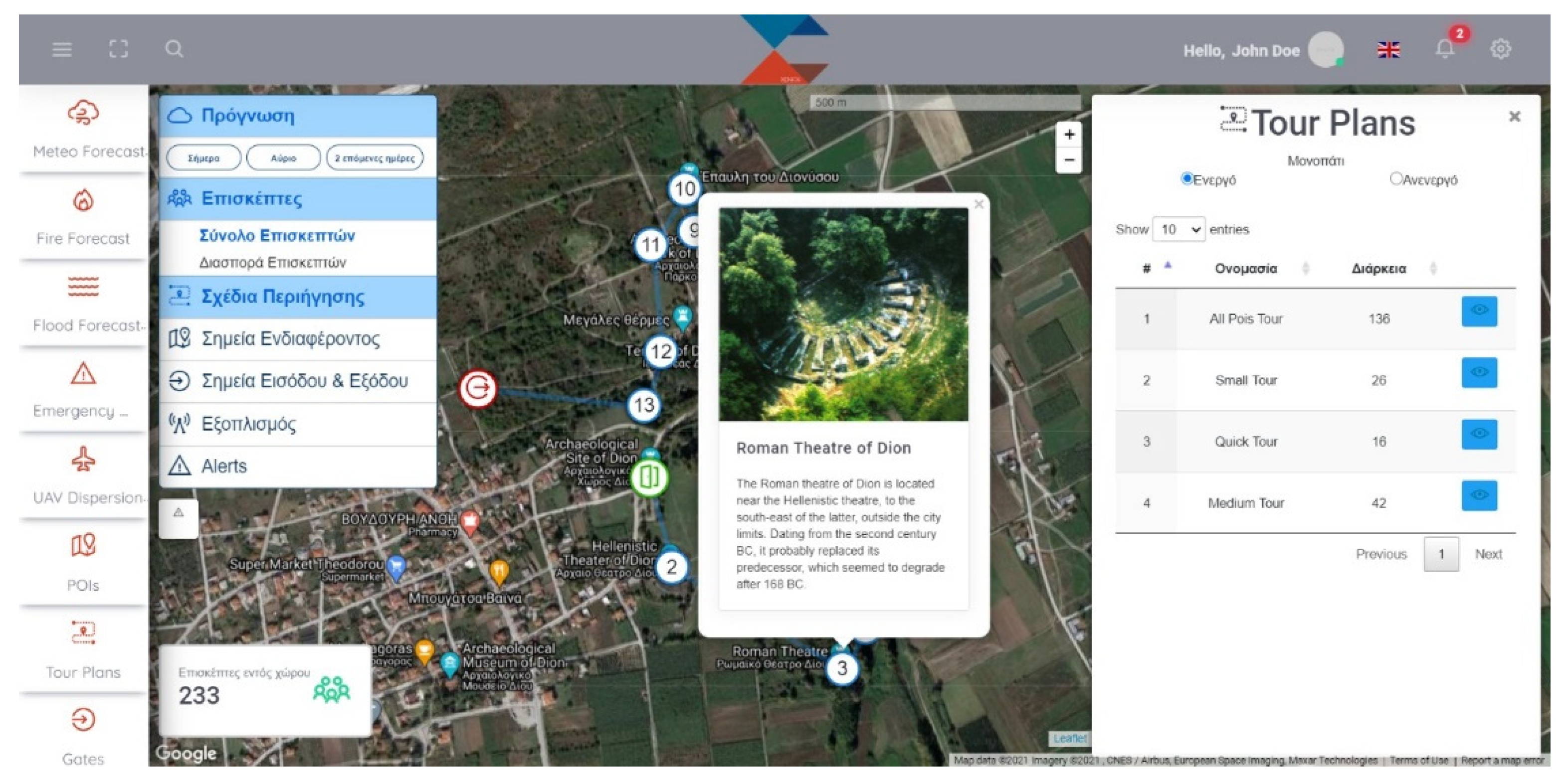
Publisher’s Note: MDPI stays neutral with regard to jurisdictional claims in published maps and institutional affiliations. |
© 2021 by the authors. Licensee MDPI, Basel, Switzerland. This article is an open access article distributed under the terms and conditions of the Creative Commons Attribution (CC BY) license (https://creativecommons.org/licenses/by/4.0/).
Share and Cite
Psaroudakis, C.; Xanthopoulos, G.; Stavrakoudis, D.; Barnias, A.; Varela, V.; Gkotsis, I.; Karvouniari, A.; Agorgianitis, S.; Chasiotis, I.; Vlachogiannis, D.; et al. Development of an Early Warning and Incident Response System for the Protection of Visitors from Natural Hazards in Important Outdoor Sites in Greece. Sustainability 2021, 13, 5143. https://doi.org/10.3390/su13095143
Psaroudakis C, Xanthopoulos G, Stavrakoudis D, Barnias A, Varela V, Gkotsis I, Karvouniari A, Agorgianitis S, Chasiotis I, Vlachogiannis D, et al. Development of an Early Warning and Incident Response System for the Protection of Visitors from Natural Hazards in Important Outdoor Sites in Greece. Sustainability. 2021; 13(9):5143. https://doi.org/10.3390/su13095143
Chicago/Turabian StylePsaroudakis, Chrysostomos, Gavriil Xanthopoulos, Dimitris Stavrakoudis, Antonios Barnias, Vassiliki Varela, Ilias Gkotsis, Anna Karvouniari, Spyridon Agorgianitis, Ioannis Chasiotis, Diamando Vlachogiannis, and et al. 2021. "Development of an Early Warning and Incident Response System for the Protection of Visitors from Natural Hazards in Important Outdoor Sites in Greece" Sustainability 13, no. 9: 5143. https://doi.org/10.3390/su13095143
APA StylePsaroudakis, C., Xanthopoulos, G., Stavrakoudis, D., Barnias, A., Varela, V., Gkotsis, I., Karvouniari, A., Agorgianitis, S., Chasiotis, I., Vlachogiannis, D., Sfetsos, A., Kaoukis, K., Christopoulou, A., Antakis, P., & Gitas, I. Z. (2021). Development of an Early Warning and Incident Response System for the Protection of Visitors from Natural Hazards in Important Outdoor Sites in Greece. Sustainability, 13(9), 5143. https://doi.org/10.3390/su13095143










